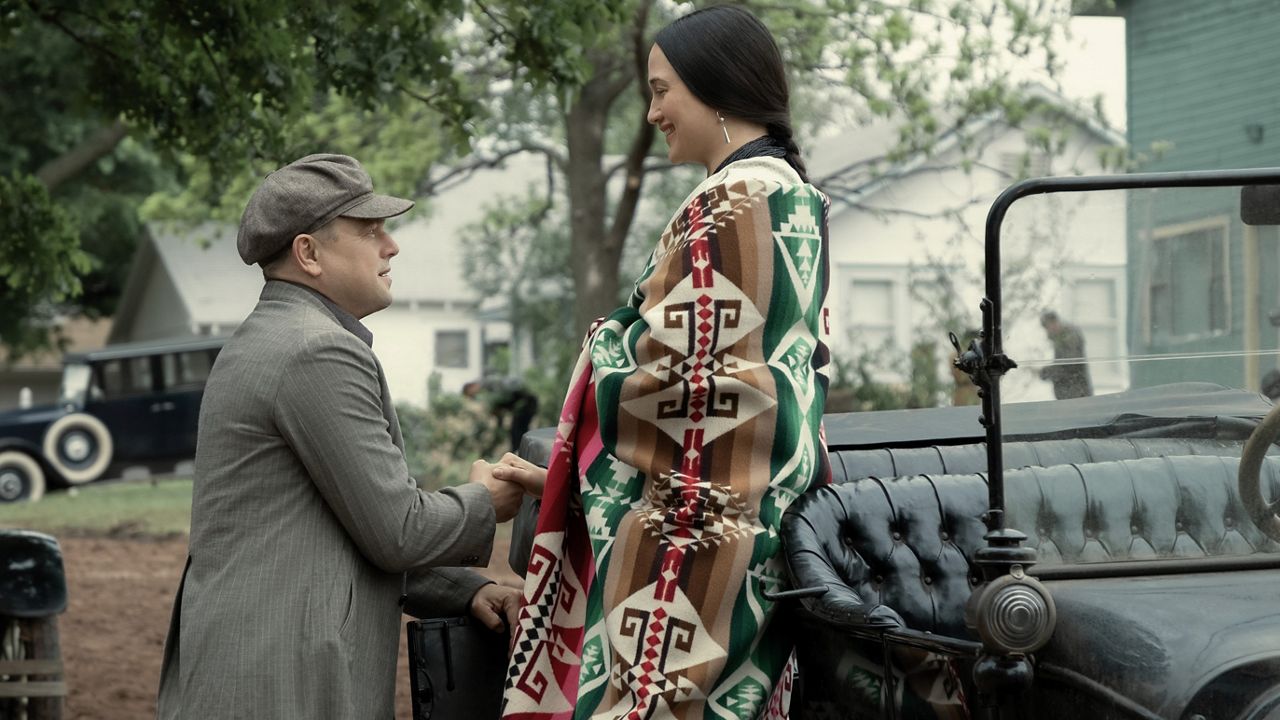LOS ANGELES — In the 1920s, members of the Osage Nation were among the wealthiest people in the world after discovering oil underneath their land in the late 1800s.
The Osage Nation became wealthy by retaining the mineral rights and leasing fields to developers. But the 1920s saw a wave of killings, known as the Reign of Terror, in which dozens of Osage members were murdered under mysterious circumstances. Their “headrights,” including shares of oil rights, could then be inherited by interlopers marrying into families for ulterior motives.
Martin Scorsese’s film, “Killers of the Flower Moon,” is based on the book by David Grann, which recounts actual events, and it follows the romance of Ernest Burkhart (Leonardo DiCaprio) and Mollie Kyle (Lily Gladstone).
To bring authenticity to the Osage Nation and other First Nations People, Scorsese enlisted costume designers Jacqueline West and Julie O’Keefe, a Native art consultant.
“There was a bar, a very high bar, set by Martin Scorsese. There wasn’t any level of detail that wasn’t explored, in particular with costume for our Osage clothing. We were able to go out into the community and we were able to engage our artisans. We were able to engage the Osage community, which allowed an epic film of this caliber to have a community project feel. That is artistry in itself. First Peoples everywhere are going to see that and really identify with that,” said O’Keefe.
West says she looked back at archival photographs of the Osage and black-and-white home movies they had made to help with the creative process.

Acting as its own character in the film is the blanket worn by Osage members. The original blankets can even be seen in the real-life photographs of Mollie, her sisters and her mother.
“For a woman, there are about six ways to wear a shawl or a blanket. If it is everyday life, it is going to be worn one way, because you are going around taking care of your children or you are tending to your mother. If you are going out to do business or go visit church, then there is something else you are going to be doing — it is going to be worn in a completely different way. There are different reasons for each of them to be worn. And by the men, too. If you are a leader, it is one way. If you are a holy man, it is going to be worn a different way. You can tell the status and what this person is doing by the way these blankets are worn,” O’Keefe told Spectrum News.
At West’s request, Oregon manufacturer Pendleton recreated the blankets for the cast to wear using patterns from the 1920s, adorned with fringe, as the Osage typically would decorate them once they receive them.
What would O’Keefe and West like for people to take away from watching the film?
“As an Osage woman sitting in the audience, I could feel that we were heard and seen. Of everything to do with this movie, the greatest success will be is for people to be questioning, ‘How did this happen? How did we get here? What does this mean?’ I want the takeaway to be more curiosity,” said O’Keefe.
“I have always been obsessed by Native American history. It is deploring the injustices that have been done to Native Americans, and I think this is going to be a landmark film. It is going to expose a story that was never taught to us in school. It might change an awareness in America and maybe change how Native Americans are treated and perceived,” said West.
“Killers of the Flower Moon” also stars Robert De Niro and Jesse Plemons. It is now released in theaters.
Click the arrow above to watch the full interview.



